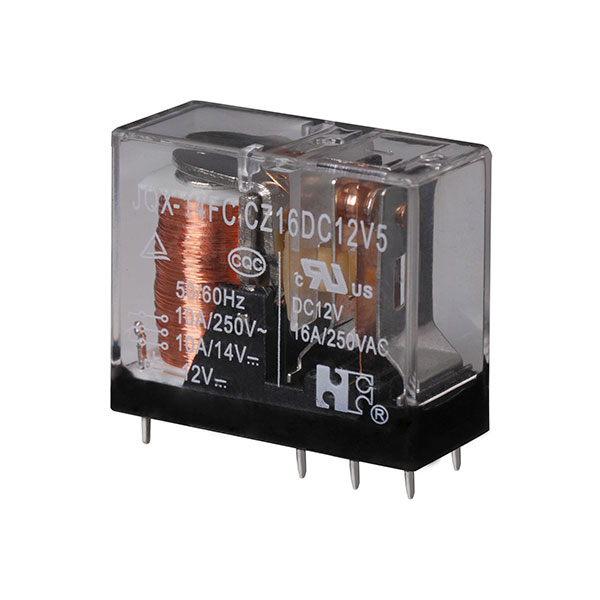Clarity in Action: The Transparent Cover Feature of the 16A Miniature Power Relay
2023-11-18
Introduction:
In the world of electrical components, innovation often lies in the details. The 16A Transparent Cover Miniature Power Relay is a prime example, showcasing a distinctive feature that sets it apart—the transparent cover. In this blog, we'll delve into what distinguishes this transparent cover and explore how it transforms the usability of the relay, offering a unique perspective into its operation.
1. Visual Monitoring and Inspection:
At the heart of the transparent cover's significance is the ability to visually monitor and inspect the relay without the need for disassembly. This feature offers a clear view into the relay's internal components, allowing engineers, technicians, or users to assess its status and condition with ease.
2. Diagnostic Convenience:
The transparent cover transforms the relay into a diagnostic tool. Users can visually check for any signs of wear, damage, or anomalies within the relay. This diagnostic convenience expedites troubleshooting processes, saving valuable time and resources in identifying and resolving issues.
3. Transparency for Safety Checks:
Safety is paramount in electrical applications, and the transparent cover provides an added layer of safety during checks. Users can visually confirm whether the relay is energized or de-energized without direct contact, reducing the risk of electrical hazards during routine inspections.
4. Ease of Maintenance:
Maintenance tasks are simplified with the transparent cover. Whether it's checking for loose connections, assessing the condition of the electromagnetic coil, or ensuring the proper alignment of internal components, the transparent cover streamlines the maintenance process, contributing to the relay's longevity.
5. Educational Value:
The transparent cover adds an educational dimension to the 16A Miniature Power Relay. It serves as a valuable tool for training purposes, allowing students or professionals to observe the relay's operation, understand the principles of electromagnetic switching, and grasp the intricacies of relay technology.
6. Quick Identification of Issues:
Any visual anomalies, such as discoloration or irregularities, can be quickly identified through the transparent cover. This allows for proactive maintenance and helps prevent potential failures or malfunctions by addressing issues before they escalate.
7. Customization and Branding:
Some transparent covers are designed to be customizable, providing opportunities for branding or labeling. This not only enhances the aesthetic appeal of the relay but also facilitates easy identification in complex electrical systems where multiple relays may be in use.
8. Improved User Experience:
The transparent cover enhances the overall user experience by offering a tangible and visual connection to the relay's operation. Users can feel more in control and confident in the reliability of the relay, knowing that its status is easily observable.
Conclusion:
In the realm of electrical engineering, where precision and reliability are paramount, the 16A Transparent Cover Miniature Power Relay with its transparent cover stands as an exemplar of innovation. Beyond its functional prowess, the transparent cover introduces a new dimension of usability, transforming the way we interact with and understand relay technology. As we peer through the transparency, we witness not just electrical currents in action but a clearer path to enhanced diagnostics, maintenance, and overall efficiency in the world of electrical applications.



